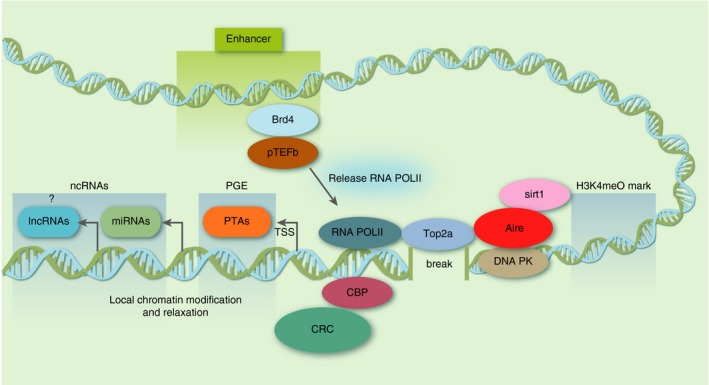Figure 2.

Mechanism of AIRE and its partners. AIRE protein binds to the chromatin in association with several other proteins. In this partial view, the protein complex binds to the transcription start site (TSS) of genes in medullary thymic epithelial cells (mTECs). Deacetylase sirtuin 1 (SIRT‐1) deacetylates lysine residues in AIRE leading to its activation. Then, AIRE through its PHD1 domain binds to AIRE‐dependent genes recognizing repressive epigenetic signatures that includes H3K4me0. TOP2a at the TSSs of AIRE‐dependent genes initiates breaks on DNA. DNA‐PK and other partners are activated by the DNA breaks resulting in local chromatin relaxation. The pTEFb/BRD4 complex releases stalled RNA POL II on chromatin, causing ensuing transcription elongation of AIRE‐dependent genes, including peripheral tissue antigen (PTA) ‐encoding genes and non‐PTA genes. As microRNAs are transcribed by RNA POL II, this species of non‐coding RNAs is regulated by AIRE in mTECs. The long non‐coding RNAs (lncRNAs), also transcribed by RNA POL II, could, perhaps, be regulated by AIRE? Finally, CREB‐binding protein (CBP) acetylates the lysine residues in AIRE leading to its repression. This figure is a modification of figure 2 published by Abramson J and Husebye ES. Immunol Rev 2016;271:127 (with permission of John Wiley and Sons).
